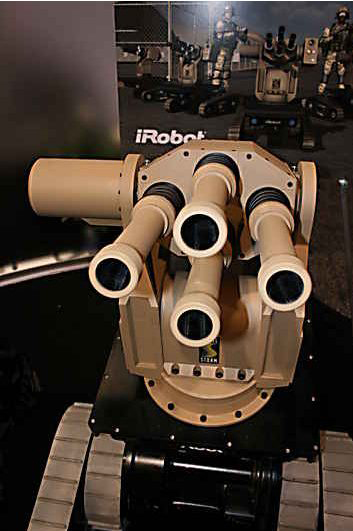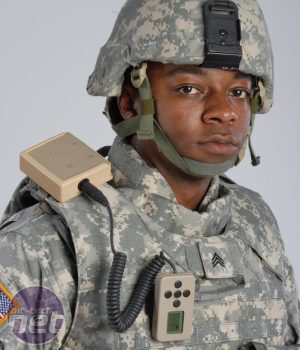Weapons
OK, so the Repulsor technology in the Iron Man movies is made up, but it’s based on a real technology: the particle beam weapon. A particle beam ionizes atoms of hydrogen, then accelerates the resulting anions using a particle accelerator. If the particle beam has its charge neutralised, then it becomes a dangerous weapon, hitting targets with enough raw kinetic energy to knock them for six. Particle beams were a key part of the Reagan-era Star Wars Defence Initiative, and were even tested during the BEAR (Beam Experiments Aboard a Rocket) program of the late eighties. However, the technology has so far proved impossible to miniaturise. First it needs a huge generator generating thousands or millions of watts of power. Secondly, particle accelerators are huge. The one at Sandia National Laboratories in the US measures 108 feet in diameter. Try fitting that into a human-sized glove! There might, however, be an alternative. Last year scientists at Tel Aviv university transformed the magnetron from a 600w microwave into a microwave drill, then used that to inject microwaves into a silicon-based substrate. The energy released produced a molten hotspot, and when the drill was pulled out this hot spot became a fireball. Find a way of chucking these around, and you’d be firing off flaming bolts at the local miscreants. Very handy.
There might, however, be an alternative. Last year scientists at Tel Aviv university transformed the magnetron from a 600w microwave into a microwave drill, then used that to inject microwaves into a silicon-based substrate. The energy released produced a molten hotspot, and when the drill was pulled out this hot spot became a fireball. Find a way of chucking these around, and you’d be firing off flaming bolts at the local miscreants. Very handy.And while Iron Man’s integrated missile launchers are a little far-fetched, science is once again moving in the right direction. The Spike guided missile – the smallest in the world – is a mere 25in long and weighs approximately 2.3kg. Alternatively, would-be Tony Stark’s might like to look at Metalstorm’s ‘solid-state’ weaponry (pictured, right). Metalstorm’s technology uses bullets stacked in barrels with individual, electronically-ignited propellant, to fire hundreds, thousands or even millions of rounds per minute without any need for locking mechanisms, hammers, firing pins or ammunition clips; perfect for integrating into that high-tech suit of armour.
Of course, Batman’s throwing spikes and reinforced gauntlets have clear real-life inspirations, but what about the grappling gun? Well, the Digital Forces Technologies T-PLS is a rifle-sized ‘line-throwing’ system capable of firing a titanium grappling hook and 7mm Kevlar line over 120ft into the air using nothing more than compressed air. However, the only system capable of powered ascent is the Atlas Power Ascender. This little handheld beauty is capable of dragging a fully-loaded soldier up a rappelling line at speeds of between 5 and 10 feet per second, depending on the model. If only someone could combine the two and miniaturise it, our grapple-gun dreams would be fulfilled.
Enhanced Perception
Iron Man can rely on his AI assistant, Jarvis, to alert him to threats and help him target. Batman can rely on microphones and earpieces in the batsuit, not to mention the cool mobile-phone enhanced sonar goggles he gets to use in The Dark Knight. But what would our real-life high-tech hero have to help him avoid danger and target his foes?Well, technologies for night vision via image intensification, thermal vision and infrared lighting are already pretty well-established, but the vision of the US military goes much further than that. The US Army’s Future Force Warrior program calls for helmet-integrated sensor suite that will provide 360 degree awareness and small-arms fire alerts.
 The US army has already rolled out Quinetic North’s Ears SWATS (Shoulder Wearable Acoustic Targeting System, pictured), which give troops in the field an instant sniper alert, complete with audible cues for direction and distance, within a second of a shot going off using a palm-sized acoustic sensor. Meanwhile, DARPA is now planning to field-test sniper scopes that can detect and compensate for wind turbulence, making once impossible long-range shots now a little more possible, while new handheld scanners from TiaLinx will make it possible for US troops to detect people or animals up to 20 feet behind an eight-inch slab of concrete using low-powered, wideband RF signals. One of these, and our hero will be able to see through walls.
The US army has already rolled out Quinetic North’s Ears SWATS (Shoulder Wearable Acoustic Targeting System, pictured), which give troops in the field an instant sniper alert, complete with audible cues for direction and distance, within a second of a shot going off using a palm-sized acoustic sensor. Meanwhile, DARPA is now planning to field-test sniper scopes that can detect and compensate for wind turbulence, making once impossible long-range shots now a little more possible, while new handheld scanners from TiaLinx will make it possible for US troops to detect people or animals up to 20 feet behind an eight-inch slab of concrete using low-powered, wideband RF signals. One of these, and our hero will be able to see through walls.However, while scientists at Hong Kong Polytechnic University are researching electronic bat ears for the visually impaired, you might not even need any technology to see in the dark. In 2009, a team of Spanish scientists led by Juan Antonio Martínez of the University of Alcalá de Henares published research suggesting that human beings could develop skills in echolocation rivalling those of bats.
After a few weeks of training for just two hours per day, test subjects could detect objects in a bag or a person standing in front of them, just by clicking their tongue and listening to the sound. This would probably have come to no surprise to echolocation expert Daniel Kish, who, blnd since youth, now teaches other blind people to navigate their surroundings by clicking tongues and analysing the echo produced. Kish even uses his skills to go hiking and mountain biking. It’s not high-tech, but you can’t get much more super-powered than that.

MSI MPG Velox 100R Chassis Review
October 14 2021 | 15:04









Want to comment? Please log in.